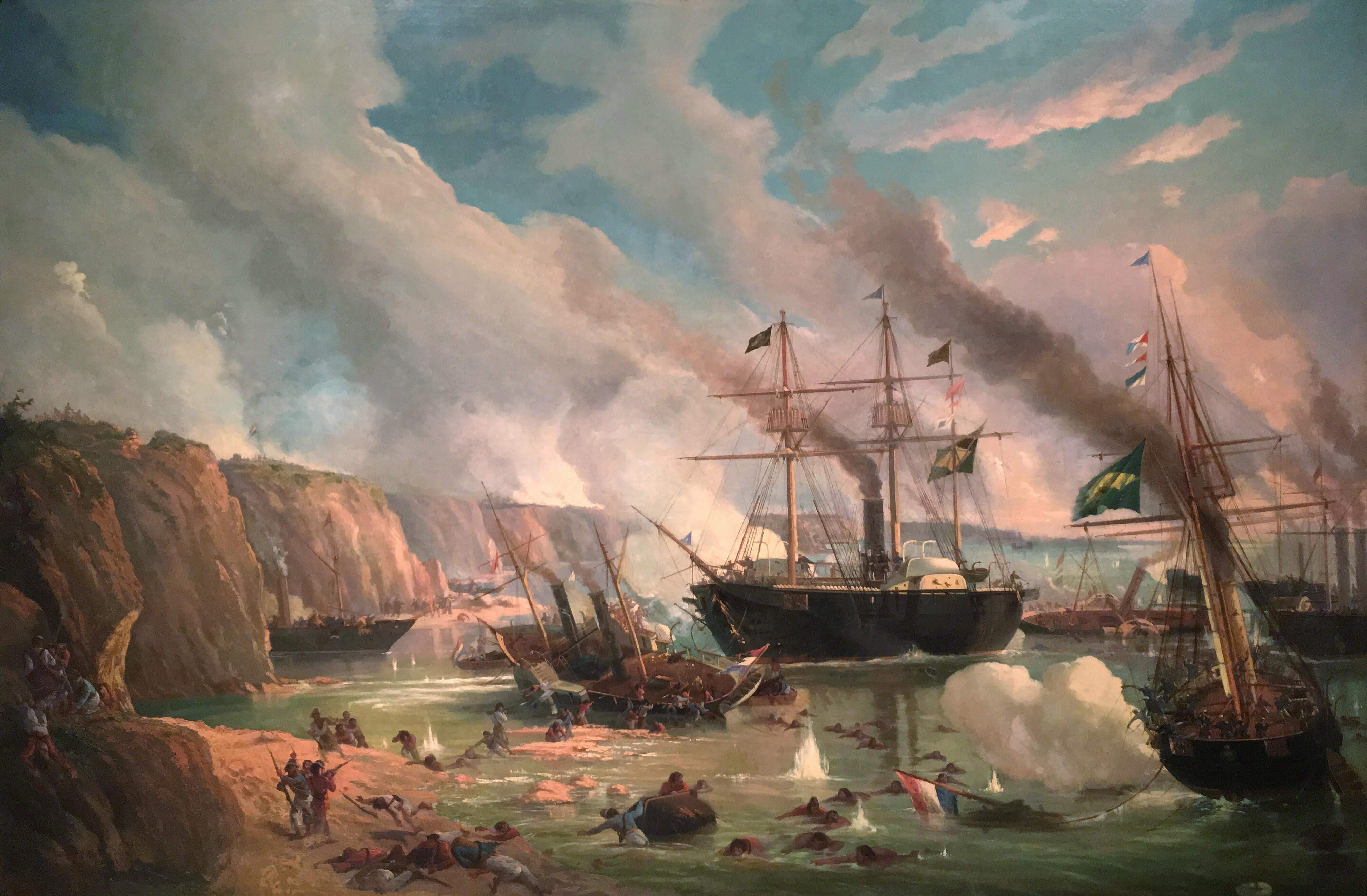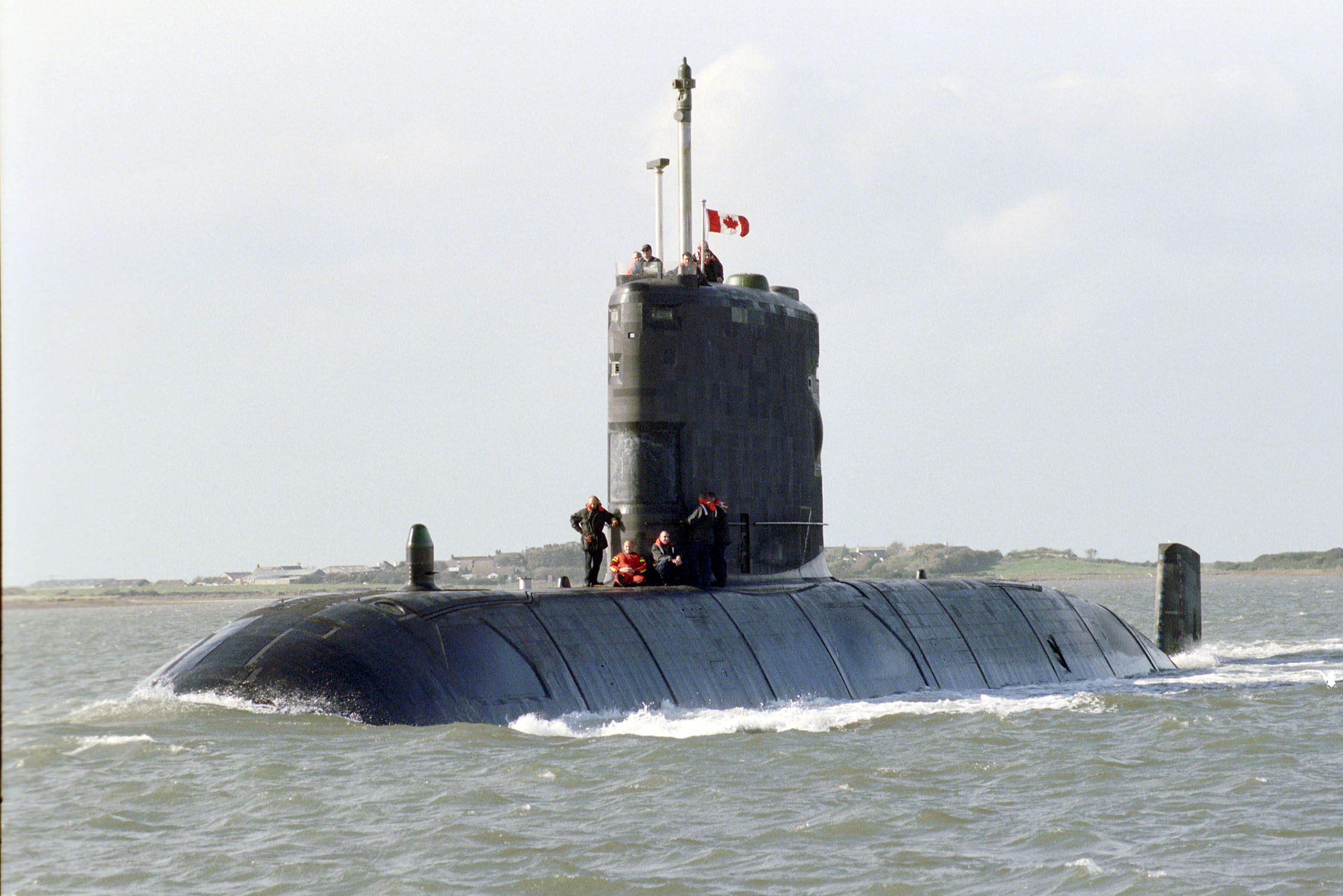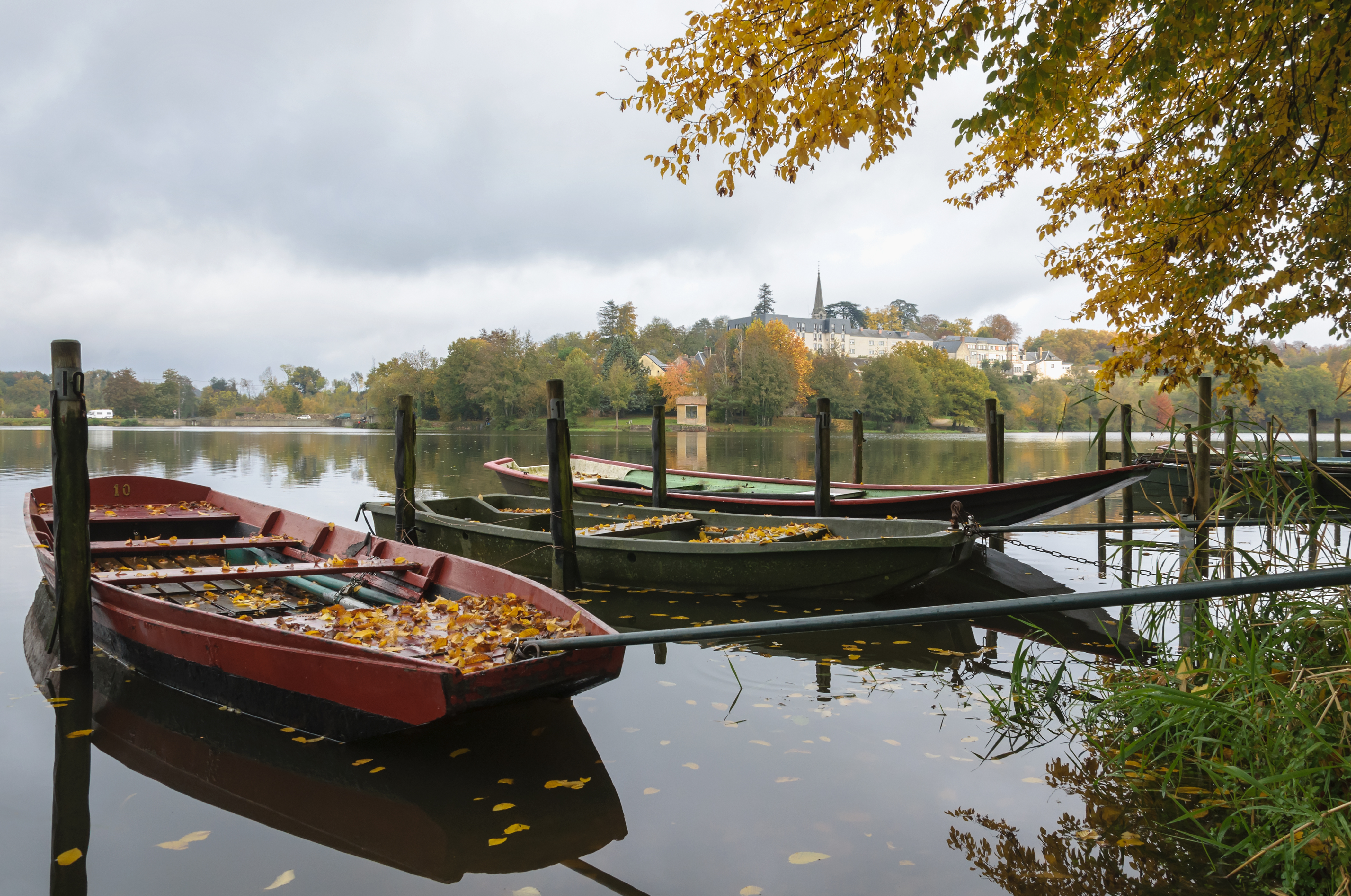|
Brazilian Submarine Riachuelo (S40)
''Riachuelo'' (S40) is a Brazilian Riachuelo-class submarine, ''Riachuelo''-class submarine built for the Brazilian Navy by DCNS (company), DCNS in Cherbourg and Itaguaí Construções Navais, ICN in Itaguaí, Brazil. The Brazilian boats are larger in length, tonnage and cargo capacity compared to the French Scorpène-class submarine, ''Scorpène'' class they are derived from. The Brazilian version are and 1,900 tons, compared to the original ''Scorpène''s that are and 1,565 tons. Program history In 2008, Brazil purchased four enlarged ''Scorpène''s for USD 10 billion with a total technology transfer agreement and a second agreement to develop the first Brazilian nuclear-powered submarine, . The hull of ''Riachuelo'' was laid down at Cherbourg, France on 27 May 2010 and it was jumboized at the Brazilian Navy Shipyard in Itaguaí in late 2012. ''Riachuelo'' was Ceremonial ship launching, launched on 14 December 2018, and began sea trials in September 2019, the ''Humaitá'' ... [...More Info...] [...Related Items...] OR: [Wikipedia] [Google] [Baidu] |
Battle Of Riachuelo
The Battle of Riachuelo was a large and decisive naval battle of the Paraguayan War between Paraguay and the Empire of Brazil. By late 1864, Paraguay had scored a series of victories in the war, but on 11 June 1865, its naval defeat by the Brazilians on the Paraná River began to turn the tide in favor of the allies. This was the largest naval battle fought between two South American countries. Plan Paraguay's fleet was a fraction of the size of Brazil's, even before the battle, and arrived at the Fortress of Humaitá on the morning of June 9. The Paraguayan president Francisco Solano López prepared to attack the ships supporting allied land troops at Riachuelo. Nine ships and seven cannon-carrying barges, totaling 44 guns, as well as 22 guns and two Congreve rocket batteries from river bank located troops, attacked the Brazilian squadron, nine ships with a total of 58 guns. The Paraguayans had planned a surprise attack before sunrise since they were fully aware that most B ... [...More Info...] [...Related Items...] OR: [Wikipedia] [Google] [Baidu] |
Scorpène-class Submarine
The Scorpène-class submarines are a class of diesel-electric attack submarines jointly developed by the French Naval Group (formerly the DCNS) and the Spanish company Navantia. It features diesel propulsion and an additional air-independent propulsion (AIP). It is now marketed as the Scorpène 2000. Scorpène characteristics The Scorpène class of submarines has three subtypes: the CM-2000 conventional diesel-electric version, the AM-2000 air-independent propulsion (AIP) derivative, the downsized CA-2000 coastal submarine, and the enlarged S-BR for the Brazilian Navy, without AIP. The Chilean and Malaysian boats are fitted with the TSM 2233 Mk 2 sonar. The class can also be fitted with a 'S-Cube' sonar suite from Thales. Air-independent propulsion The French Module d'Energie Sous-Marine Autonome (MESMA) system is being offered by the French shipyard Naval Group for the Scorpène-class submarines. It is essentially a modified version of their nuclear propulsion system with h ... [...More Info...] [...Related Items...] OR: [Wikipedia] [Google] [Baidu] |
Ships Built In France
A ship is a large watercraft that travels the world's oceans and other sufficiently deep waterways, carrying cargo or passengers, or in support of specialized missions, such as defense, research, and fishing. Ships are generally distinguished from boats, based on size, shape, load capacity, and purpose. Ships have supported exploration, trade, warfare, migration, colonization, and science. After the 15th century, new crops that had come from and to the Americas via the European seafarers significantly contributed to world population growth. Ship transport is responsible for the largest portion of world commerce. The word ''ship'' has meant, depending on the era and the context, either just a large vessel or specifically a ship-rigged sailing ship with three or more masts, each of which is square-rigged. As of 2016, there were more than 49,000 merchant ships, totaling almost 1.8 billion dead weight tons. Of these 28% were oil tankers, 43% were bulk carriers, and 13% were co ... [...More Info...] [...Related Items...] OR: [Wikipedia] [Google] [Baidu] |
Ships Built In Brazil
A ship is a large watercraft that travels the world's oceans and other sufficiently deep waterways, carrying cargo or passengers, or in support of specialized missions, such as defense, research, and fishing. Ships are generally distinguished from boats, based on size, shape, load capacity, and purpose. Ships have supported exploration, trade, warfare, migration, colonization, and science. After the 15th century, new crops that had come from and to the Americas via the European seafarers significantly contributed to world population growth. Ship transport is responsible for the largest portion of world commerce. The word ''ship'' has meant, depending on the era and the context, either just a large vessel or specifically a ship-rigged sailing ship with three or more masts, each of which is square-rigged. As of 2016, there were more than 49,000 merchant ships, totaling almost 1.8 billion dead weight tons. Of these 28% were oil tankers, 43% were bulk carriers, and 13% were con ... [...More Info...] [...Related Items...] OR: [Wikipedia] [Google] [Baidu] |
Attack Submarines
An attack submarine or hunter-killer submarine is a submarine specifically designed for the purpose of attacking and sinking other submarines, surface combatants and merchant vessels. In the Soviet and Russian navies they were and are called "multi-purpose submarines". They are also used to protect friendly surface combatants and missile submarines. Some attack subs are also armed with cruise missiles, increasing the scope of their potential missions to include land targets. Attack submarines may be either nuclear-powered or diesel-electric ("conventionally") powered. In the United States Navy naming system, and in the equivalent NATO system (STANAG 1166), nuclear-powered attack submarines are known as SSNs and their anti-submarine (ASW) diesel-electric predecessors are SSKs. In the US Navy, SSNs are unofficially called "fast attacks". History Origins During World War II, submarines that fulfilled the offensive surface attack role were termed fleet submarines in the U.S. ... [...More Info...] [...Related Items...] OR: [Wikipedia] [Google] [Baidu] |
Imperial Brazilian Navy
The Imperial Brazilian Navy (Portuguese: ''Armada Nacional'', commonly known as ''Armada Imperial'') was the navy created at the time of the independence of the Empire of Brazil from the United Kingdom of Portugal, Brazil and the Algarves. It existed between 1822 and 1889 during the vacancy of the constitutional monarchy. The Navy was formed almost entirely by ships, staff, organizations and doctrines proceeding from the transference of the Portuguese Royal Family in 1808. Some of its members were native-born Brazilians, who under Portugal had been forbidden to serve. Other members were Portuguese who adhered to the cause of separation and German and Irish mercenaries. Some establishments created by King John VI were used and incorporated. Under the reign of Emperor Pedro II the Navy was greatly expanded to become the fifth most powerful navy in the world and the armed force more popular and loyal to the Brazilian monarchy. Creation The Imperial Navy came into being with the in ... [...More Info...] [...Related Items...] OR: [Wikipedia] [Google] [Baidu] |
Flat-bottomed Boat
A flat-bottomed boat is a boat with a shallow draft, two-chined hull, which allows it to be used in shallow bodies of water, such as rivers, because it is less likely to ground. The flat hull also makes the boat more stable in calm water, which is good for hunters and anglers. However this design becomes less stable in choppy water. This is because it causes the boat to travel ''on'' the water, instead of ''through'' it, as a boat with a rounded or V-shaped hull would. Flat hulls are simple to construct, making them popular with boat-building hobbyists. In Britain they came to popular notice during the planned French invasion of Britain in 1759, when a large-number of flat-bottomed boats were prepared by the French to ferry their invasion force across the channel and a number were destroyed during the British Raid on Le Havre. The flat-bottoms are mentioned in the song ''Heart of Oak'' written by David Garrick during 1759. Types *Barge * Bateau * Bull boat * Car float ... [...More Info...] [...Related Items...] OR: [Wikipedia] [Google] [Baidu] |
Steamboat
A steamboat is a boat that is marine propulsion, propelled primarily by marine steam engine, steam power, typically driving propellers or Paddle steamer, paddlewheels. Steamboats sometimes use the ship prefix, prefix designation SS, S.S. or S/S (for 'Screw Steamer') or PS (for 'Paddle Steamer'); however, these designations are most often used for steamships. The term ''steamboat'' is used to refer to smaller, insular, steam-powered boats working on lakes and rivers, particularly riverboats. As using steam became more reliable, steam power became applied to larger, ocean-going vessels. Background Limitations of the Newcomen steam engine Early steamboat designs used Newcomen atmospheric engine, Newcomen steam engines. These engines were large, heavy, and produced little power, which resulted in an unfavorable power-to-weight ratio. The Newcomen engine also produced a reciprocating or rocking motion because it was designed for pumping. The piston stroke was caused by a water jet i ... [...More Info...] [...Related Items...] OR: [Wikipedia] [Google] [Baidu] |
Yacht
A yacht is a sailing or power vessel used for pleasure, cruising, or racing. There is no standard definition, though the term generally applies to vessels with a cabin intended for overnight use. To be termed a , as opposed to a , such a pleasure vessel is likely to be at least in length and may have been judged to have good aesthetic qualities. The Commercial Yacht Code classifies yachts and over as . Such yachts typically require a hired crew and have higher construction standards. Further classifications for large yachts are: —carrying no more than 12 passengers, —solely for the pleasure of the owner and guests, or by flag, the country under which it is registered. A superyacht (sometimes ) generally refers to any yacht (sail or power) longer than . Racing yachts are designed to emphasize performance over comfort. Charter yachts are run as a business for profit. As of 2020 there were more than 15,000 yachts of sufficient size to require a professional crew. Etymolog ... [...More Info...] [...Related Items...] OR: [Wikipedia] [Google] [Baidu] |
Paraguayan War
The Paraguayan War, also known as the War of the Triple Alliance, was a South American war that lasted from 1864 to 1870. It was fought between Paraguay and the Triple Alliance of Argentina, the Empire of Brazil, and Uruguay. It was the deadliest and bloodiest inter-state war in Latin American history. Paraguay sustained large casualties, but the approximate numbers are disputed. Paraguay was forced to cede disputed territory to Argentina and Brazil. The war began in late 1864, as a result of a conflict between Paraguay and Brazil caused by the Uruguayan War. Argentina and Uruguay entered the war against Paraguay in 1865, and it then became known as the "War of the Triple Alliance". After Paraguay was defeated in conventional warfare, it conducted a drawn-out guerrilla resistance, a strategy that resulted in the further destruction of the Paraguayan military and the civilian population. Much of the civilian population lost their lives due to battle, hunger, and disease. The gu ... [...More Info...] [...Related Items...] OR: [Wikipedia] [Google] [Baidu] |
Brazilian Submarine Humaitá (S41)
''Humaitá'' (S41) is a Brazilian ''Riachuelo''-class submarine built for the Brazilian Navy by ICN in Itaguaí, and DCNS. The Brazilian boats are larger in length, tonnage and cargo capacity compared to the original French project. The Brazilian version are and 1,900 tons, compared to the original Scorpènes that are and 1,565 tons. Program history In 2008, Brazil purchased four enlarged Scorpènes for USD 10 billion with a total technology transfer agreement and a second agreement to develop the first Brazilian nuclear-powered submarine, . The hull of ''Riachuelo'' was laid down at Cherbourg, France on 27 May 2010 and it was jumboized at the Brazilian Navy Shipyard in Itaguaí in late 2012. The first submarine ''Riachuelo'' was launched on 14 December 2018, and began sea trials in September 2019, the ''Humaitá'' was launched on 11 December 2020. Development and design The first stage of construction of the ''Humaitá'' took place in September 2013 in Brazil, at ... [...More Info...] [...Related Items...] OR: [Wikipedia] [Google] [Baidu] |
Sea Trial
A sea trial is the testing phase of a watercraft (including boats, ships, and submarines). It is also referred to as a " shakedown cruise" by many naval personnel. It is usually the last phase of construction and takes place on open water, and it can last from a few hours to many days. Sea trials are conducted to measure a vessel's performance and general seaworthiness. Testing of a vessel's speed, maneuverability, equipment and safety features are usually conducted. Usually in attendance are technical representatives from the builder (and from builders of major systems), governing and certification officials, and representatives of the owners. Successful sea trials subsequently lead to a vessel's certification for commissioning and acceptance by its owner. Although sea trials are commonly thought to be conducted only on new-built vessels (referred by shipbuilders as 'builders trials'), they are regularly conducted on commissioned vessels as well. In new vessels, they are use ... [...More Info...] [...Related Items...] OR: [Wikipedia] [Google] [Baidu] |


.jpg)





.jpg)